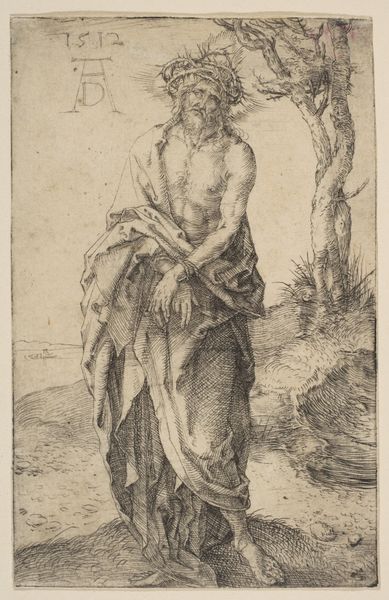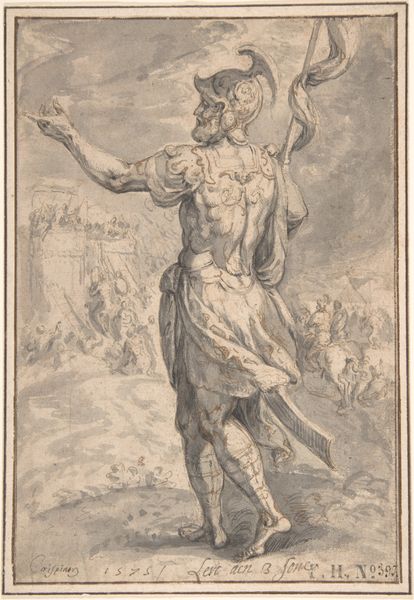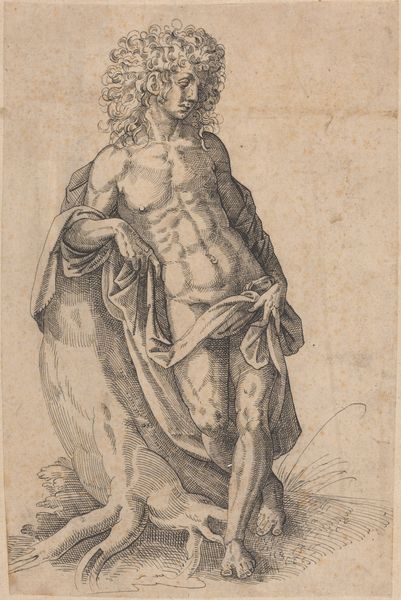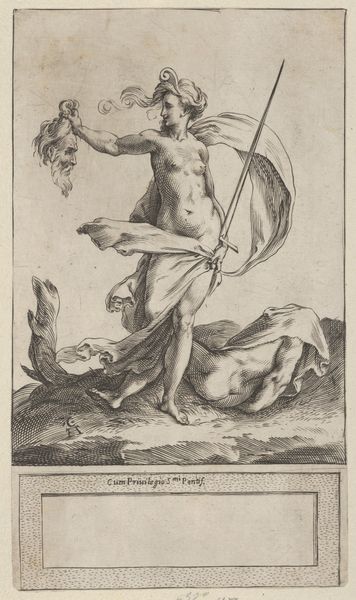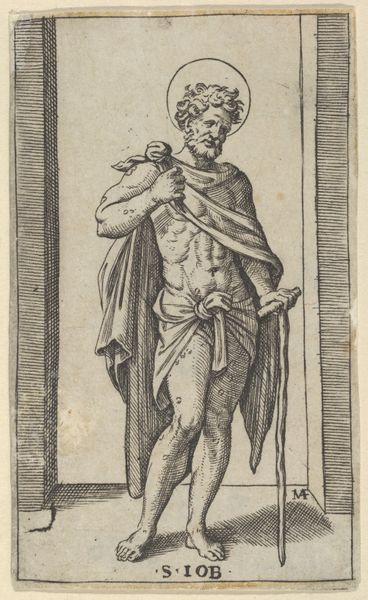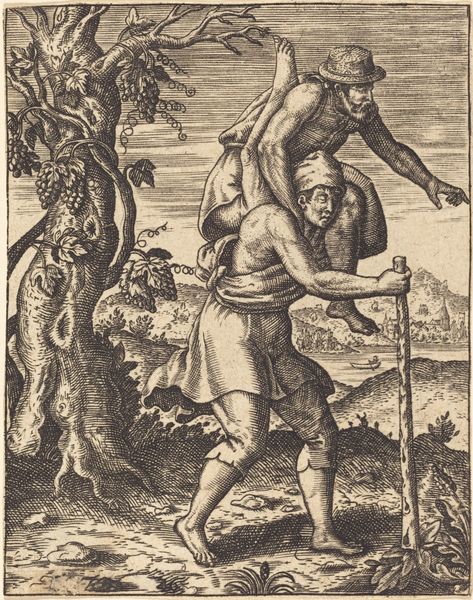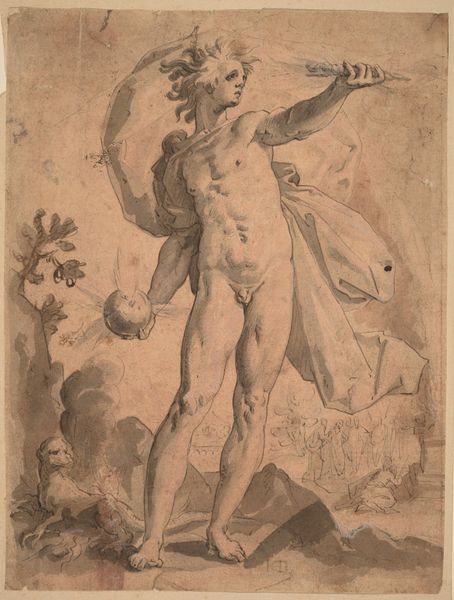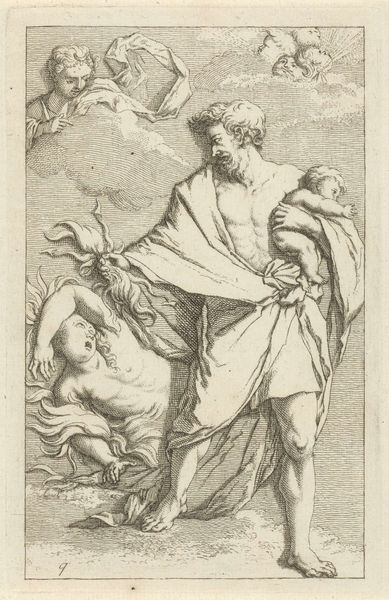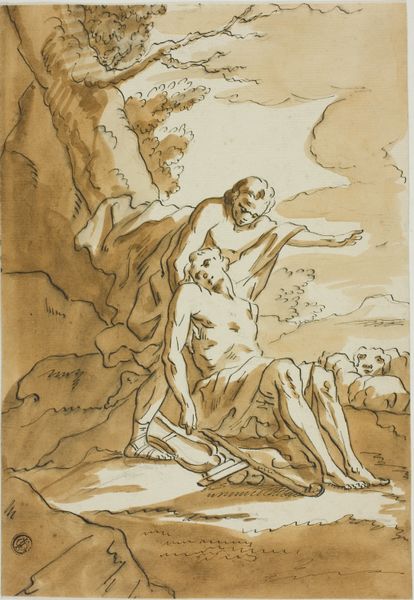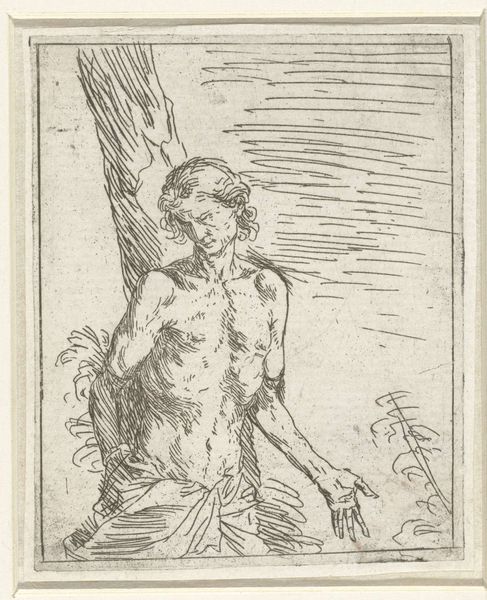
drawing, print, ink, pen
#
drawing
#
ink painting
# print
#
landscape
#
charcoal drawing
#
ink
#
pen
#
history-painting
#
watercolor
Dimensions: 6 5/8 x 4 in. (16.8 x 10.1 cm)
Copyright: Public Domain
Curator: This intriguing drawing, "Diogenes Throwing His Cup to the Ground," hails from the 17th century and is currently held here at the Metropolitan Museum of Art. It's rendered in ink and pen. Editor: It's remarkably sparse. The ink wash creates a landscape of subtle gradations, drawing immediate attention to the figure, Diogenes, his robe rendered with confident strokes. There's a pronounced angularity. Curator: The subject itself provides context. Diogenes was a Cynic philosopher who famously rejected societal norms. The act of discarding his cup symbolizes his commitment to living a life of extreme simplicity, a powerful statement against materialism, especially given the evolving social landscape and rampant commercialism of the 17th Century. Editor: Visually, I find the composition so engaging. The tree in the background, almost skeletal, mirrors the leanness of Diogenes himself. Notice how the lines converge to lead the eye directly to the discarded cup; a focal point cleverly established. What kind of statement do you think this composition aims to create? Curator: Given Diogenes’s anti-establishment stance, this scene champions an existence outside societal validation, resonating with periods when social and political upheaval spurred a renewed interest in classical ideals of virtue and self-sufficiency. Think of the Dutch Republic establishing independence during the same century, seeking new ways to order society. Editor: Exactly. Also, the dog. It emphasizes his philosophy through juxtaposition; animalistic contentment versus human dissatisfaction. It's all masterfully condensed into these few shades of ink. Curator: Absolutely. Considering the role art played then in shaping cultural values, depictions of figures like Diogenes served not only as historical documentation but as ethical examples, shaping public discourse about moral virtue. Editor: This artwork encapsulates simplicity itself, making a clear argument for reduction. It offers a case study for intentional restraint. Curator: Yes, and studying pieces like these helps us unpack how cultural narratives of simplicity versus opulence get constructed and circulated through art. Editor: Seeing the power imbued in the sparseness is, for me, its enduring fascination.
Comments
No comments
Be the first to comment and join the conversation on the ultimate creative platform.
